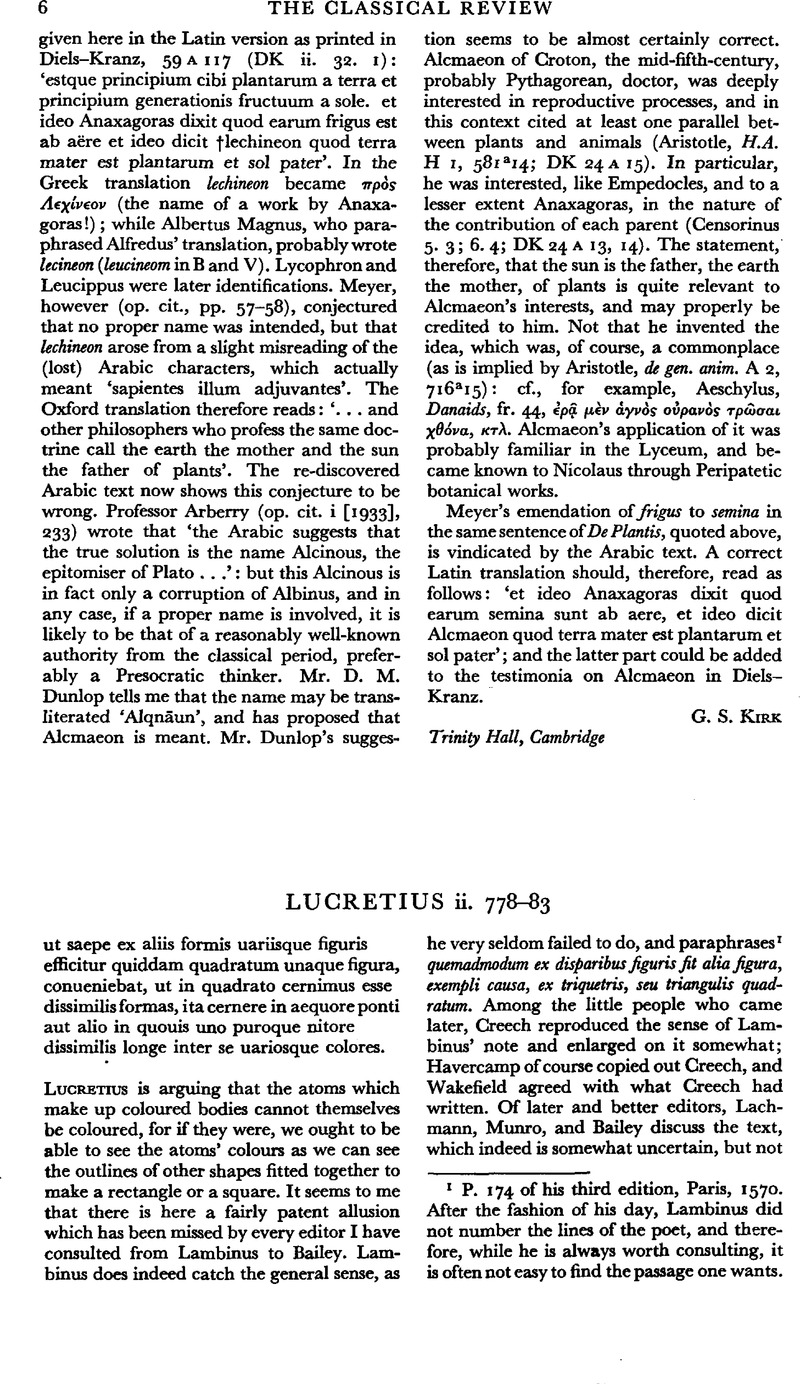No CrossRef data available.
Published online by Cambridge University Press: 13 February 2009

page 6 note 1 P. 174 of his third edition, Paris, 1570. After the fashion of his day, Lambinus did not number the lines of the poet, and therefore, while he is always worth consulting, it is often not easy to find the passage one wants.
page 7 note 1 Critical edition in Archimedes, ed. J. L. Heiberg (Teubner), vol. ii, pp. 417–24.
page 7 note 2 Ausonius xvii. 208 Peiper (Teubner), vol. i, p. 374 Evelyn White (Loeb). The odd thing is that both these editors, with the true reading staring them in the face in the cod. Tilianus and the editio princeps, have printed corruptions, ostomachian and ostomachion respectively. A good account of the puzzle is given by Oldham, R. D. in Nature, 1926, p. 337Google Scholar. Ausonius says that the resultant shapes were species mille formarum, helephantus belua aut aper bestia, anser uolans et mirmillo in amis, subsidens uenator et latrans canis, quin et turris et cantharus et alia huiusmodi innumerabilium figurarum. These manifestly were the idle amusements of those who had not the skill to fit the pieces together properly. A few more references to the stomachium are given in Evelyn White's appendix, vol. i, pp. 395–7.